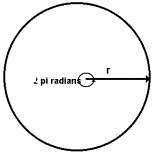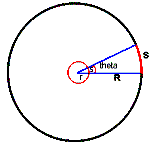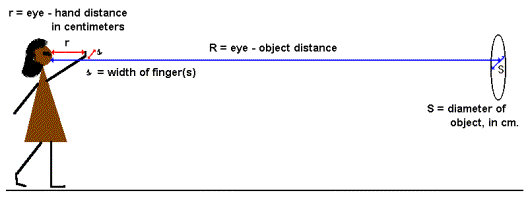Reference no: EM13873087
• Angular width of the moon whatever phase it is in today) = < 1931" (Waxing Gibbous) • Separation of two stars in Orion (or other constellation of your choice provided you specify it) = 28.8"
Approximate Measurements Report Form
|
Object
|
S (width of picture in cm)
|
R (distance from wall to eye in cm)
|
Angle (radians)
|
Angle (degrees)
|
|
Thumb
|
4.5”
|
111”
|
.0405 radians
|
2.3 degrees
|
|
Index finger
|
4.5”
|
104”
|
.0433 radians
|
2.46 degrees
|
|
2 fingers
|
4.5”
|
97”
|
.0464 radians
|
2.64 degrees
|
|
3 fingers
|
4.5”
|
90”
|
.05 radians
|
2.84 degrees
|
|
4 fingers
|
4.5”
|
83”
|
.0542 radians
|
3.08 degrees
|
|
Fist
|
4.5”
|
87”
|
.0517 radians
|
2.94 degrees
|
Now use you hand and fingers to measure the following.
- Angular width of the moon whatever phase it is in today) = < 1931” (Waxing Gibbous)
- Separation of two stars in Orion (or other constellation of your choice provided you specify it) = 28.8”
Approximate Location of Sky Objects Using Your Hand*
Two of the most difficult questions to answer regarding objects you observe in the sky are, "How big is it?" and "How far away is it?" The second question is actually less difficult to answer than the first, and can be answered by a variety of methods, each of which is appropriate for a different distance range.
The first question is very difficult to answer without an absolute standard of reference. For example, if you take a picture of a rock on a hillside, someone else who looks at your picture, without having seen the rock in its original surroundings, has no idea of the actual size of the rock. If, however, you put a ballpoint pen next to the rock when you take the photograph, when you show the photo to someone else, she can immediately judge the size of the rock by mentally comparing it with a familiar object - the pen - whose size is commonly known.
Imagine you are stranded on a dark country road, and a car with its headlights on is approaching you. You can estimate its distance from you at any given instant by the apparent size its and brightness of its headlights as they appear to you. However, if you had never seen headlights before, how could you judge their distance? It is only because you have a general idea of how big and bright the average car's headlights are that you can estimate the distance to a car on a dark night......but, you have never seen a star up close, so how can you judge its distance and size, or the distance between stars, or the diameter of the Moon, when you observe them in the sky at night?
The way we measure sizes and distances when we observe heavenly bodies is by using some simple geometry...
Recall that there are 2p radians in a circle, and that the circumference of the circle is 2p times the radius:

but if you sweep the radius through a smaller angle, the arc length is a portion of the whole circumference, and is equal to the central angle, q in radians, times the radius
 2R = circumference ... when the central angle is 2p radians qR = S
2R = circumference ... when the central angle is 2p radians qR = S
... where S is the arc length and q is the central angle, in radians
From this we can see that 2p= circumference/R and similarly that q = S/R
Taking this idea further, you can see that if you draw a small circle of radius r, concentric with the larger circle of radius R, that for both circles the relationship 2p = circumference/radius is still true.
q = S/R and q = s/r so therefore S/R = s/r ?
It is easy to visualize the sky as a tremendous dome, so rather than measuring absolute distances and arc lengths, we measure ANGULAR DIAMETER.

There is a really easy way to measure approximate angular diameters in the sky by using the angular diameters of your fingers. You can calibrate your fingers using objects on the walls of your room, by knowing the distance from the wall and the absolute diameter of the object as follows:
Select a picture on the wall, and step back from it. Hold your hand out at arm's length. Close one eye, and hold up one finger, adjusting your distance from the picture on the wall so that your finger just blocks out your view of the entire picture. The angle subtended by your finger and the angle subtended by the picture, as seen from your eye, are the same.

Again, letting s = the width of your finger, r = the horizontal distance from your eye to your outstretched hand, S = the linear diameter of the object on the wall, and R = the distance from your eye to the wall, the same angular relationship holds true:
s/r = S/R = q finger or the distance from you eye to your finger just the width of the picture and the distance from your eye to the picture when you are far enough from the wall so that your finger just obscures the width of the picture. This works out because, for small angles which are less than 15o (or around 0.26 radians), the angular diameter and the linear diameter are very nearly equal.
So, you will now proceed to find the angular diameter of your thumb, index finger, two fingers, three fingers, four fingers, fist, and open palm. You will then have your personal tool for measuring angles in the sky. When you go out observing with friends, and you are trying to point out a faint but interesting object, you will be able to communicate distances and directions in the sky in an understandable way instead of saying, "Look up and to the right from that tree...".
Procedure:
1) Find a suitable picture on the wall, or other conveniently flat object. Close one eye, and stand where your thumb just blocks out your view of the picture when you hold your thumb out at arm's length. BE SURE TO HOLD YOUR ARM OUTSTRETCHED AT THE SAME POSITION FOR EVERY MEASUREMENT!
2) Measure the distance from where you are standing to the wall ("R"). Measure the diameter[or width if picture is rectangular] of the picture ("S"). BE SURE TO MAKE ALL YOUR MEASUREMENTS IN CENTIMETERS. (or inches, it matters not - just be consistent!)
Record all your measurements in a DATA TABLE as you make them.
3) Calculate the angular diameter of your thumb in radians as q = S/R. (Since we already established that s/r = S/R = q, you need only measure S and
R. You do not measure the width of your thumb or the distance from your eye to you thumb.)
4) Convert your angular measurement from radians to degrees:
360o = 2 p radians, so 360o/2p = 1 radian, or 1 radian = 57.3o.
DATA TABLE : Download and use the Data Table included in the Report form for this lab.
Using your new-found tool: Now that you have a reference, go out tonight and measure the angular diameter of the:
- if available the distance between the outermost stars in the constellation Orion
(If Orion is not available when you're making your measurements, select and measure another constellation. Be sure to identify it.Record these measurements in the Report form for this experiment.
* The Idea for the first part of this lab was developed and put on the Internet for anyone to use. In appreciation we list the following credits: RAAP Introductory Astonomy Labcontributed by: Jatila van der Veen, Adolfo Camarillo High School, and UCSB / RAAP